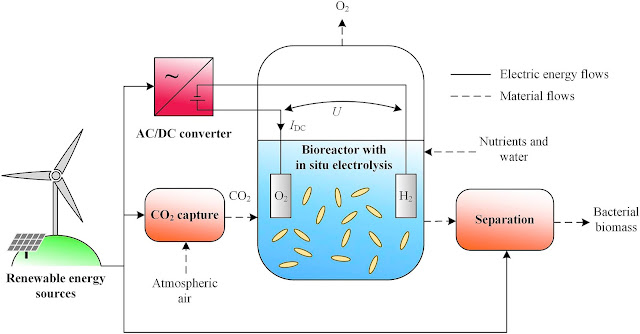Protein from Air, The Future of Farm-Free Food
Is it really possible to produce food just from 'thin air'? And will this new technology be able to save our planet earth?
I have spent a lot of time thinking about food over the past month. Even before this coronavirus period, I used to spend a lot of time cerebrating about food in general, but now, due to the curfew imposed in my city- Chandigarh- since last week of March because of COVID-19, my cerebral cells have really been pushed to think about it a lot more than usual. While my Instagram feed has been filled with people showing off their newly-acquired cooking skills, I and one of my food-nerd friends, Apoorva Tikku, have been sharing articles and discussing all the novel innovative ways to produce food.
During this season of sharing links with each other, I came across a review paper published in September 2019, written by a team of Finnish scientists, that explains how protein flour can be produced without any farms, farmers, plants, and photosynthesis.
This team of scientists, working for Solar Foods, has been developing a solution for turning emission-free electricity and CO2 captured from the air to food.
How this exactly works?
This process starts by placing the microbes in a liquid medium within a fermenter. Then they use electricity to split hydrogen from water, using the process of electrolysis. This hydrogen, derived from water, acts a food for microbes along with other nutrients such as nitrogen, calcium, phosphorus, potassium etc. As the microbes grow and the liquid starts to get thicker, some of it is then taken out and dried to form a powder. This powder is protein-rich and its macronutrient composition is very similar to dried soy.
Is it environment friendly?
The company Solar Foods claims that the electricity used in this process is being generated from solar and wind power. Believing that this information provided is accurate and that all the main ingredients (Carbon (CO2), hydrogen, oxygen and nitrogen) are being captured from the air; I would say it has the potential to completely transform the food industry and make food production more sustainable.
If this concept successfully commercializes, food companies across the globe would soon be able to produce food with near-zero greenhouse gas emissions.
Will people actually buy lab-produced protein food?
Nowadays, you can go into any store and find a plethora of pouches and jars packed with protein powders and flours but most of them taste bitter on your tongue. According to a few reports published online, Solar Foods’ protein flour - called Solein- tastes nothing. It means that it’ll make it a perfect neutral additive to all sorts of foods. The scientists are expecting it to be used as a protein ingredient in bread, pasta and drinks.
Apart from this, this protein flour is completely vegan and relatively environment-friendly.
Is this protein flour available in the market yet?
The team of Solar Foods is expecting its product- Solein- to be in the market by 2021.
What’s the current status of this project?
As per the information available on Solar Foods’ website, this startup is operating a pilot plant in Espoo- the second-largest city in Finland- and working towards the commercialization of the protein.





Comments
Post a Comment